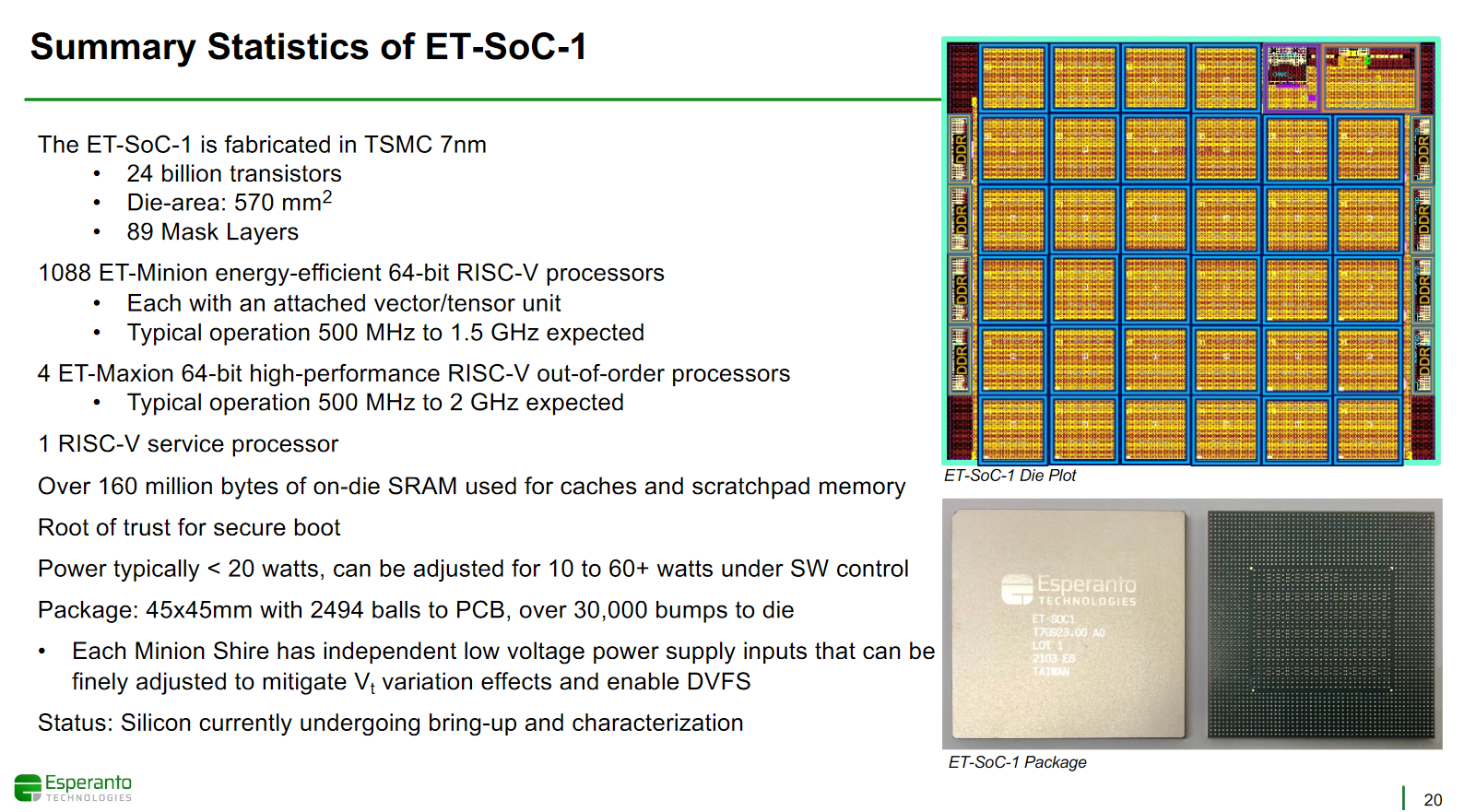Esperanto Delivers Kilocore Processor in its Supercomputer-on-a-Chip Design
Over a thousand cores!
Esperanto Technologies, a San Francisco startup company founded by Dave Ditzel, took the stage at this year's HotChips 33 presentation to show off its latest processors. Codenamed ET-SoC-1, the company delivers one of the first kilocore designs to the masses.
Kilocore processor design assumes that there are one thousand processor cores present. And Esperanto's approach involves just that. Building a chip with one thousand cores required Esperanto to carefully consider its applications, and how the chip is going to operate.
There are 1088 smaller, low-power ET-Minion 64-bit RISC-V cores designed to run in parallel and execute workloads with ease. To accompany the small cores, Esperanto packed an additional 4 high-performance ET-Maxion 64-bit RISC-V cores. The smaller cores are in-order execution designs, while the bigger ones are designed for out-of-order execution. The whole chip is taped out at TSMC's facilities, using the 7nm manufacturing node.
When it comes to smaller cores, they are packing a dedicated vector/tensor processing unit to accelerate AI workloads. Those cores are designed with a low number of gates/stages to achieve better frequency at lower voltages, meaning increased efficiency. There are two hardware threads for execution, so the ET-Minion cores feature SMT. This design runs with in-order execution, yielding maximum efficiency and no instruction cycles wasted. ET-Minion cores have an operating range of 300MHz to 2GHz.
The bigger ET-Maxion cores are designed for no-compromise RISC-V ISA experience. Featuring everything from privileged and compressed ISA, these cores can run standalone if configured as such. The cores are out-of-order execution and have an operating range of 500MHz to 2GHz.



The ET-SoC-1 is designed with over 160 million bytes of on-chip SRAM, split into L1 cache and scratchpad memory. It has support for PCIe Gen4, 256-bit wide (quad-channel) LPDDR4x for memory, and features a RISC-V service processor for secure boot, system management, and timers. It's all packed into a 570mm2 chip with 22.5 billion transistors. In regular operations, it uses under 20 Watts of power, while it can be software configured for 10-60 Watt workloads.
Esperanto notes that this "supercomputer-on-a-chip" is suitable for all kinds of workloads, not just AI/ML, as it operates with general-purpose RISC-V cores. That means that every application in need of a high level of parallel processing can benefit from using the chip, and its low power is suitable for all kinds of applications.
Get Tom's Hardware's best news and in-depth reviews, straight to your inbox.
How it compares to the competition is the real question. A kilocore CPU with tensor processing capabilities starts to look a lot like a custom chip for AI, and the four high performance cores likely won't keep up with modern CPU designs from AMD and Intel, or perhaps even Arm.